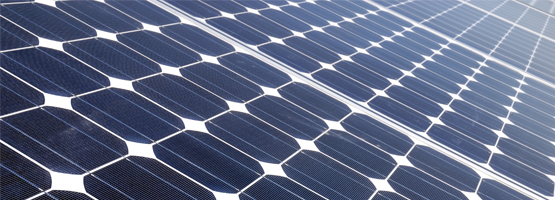Solar energy, which reaches the earth's surface in the form of light and heat and can be actively utilised in a variety of ways: with the aid of photovoltaic systems for electricity production, through the use of solar collectors for heat production (hot water and auxiliary heating) or through the use of concentrating systems for activating chemical processes and producing electricity.
Photovoltaic systems primarily comprise photovoltaic modules (or panels), which in turn consist of cells made of (mostly silicon-based) semiconductor materials similar to those used for the manufacture of computer chips. They convert solar radiation into electricity in the form of direct current, which is then converted into alternating current with the aid of an inverter so that it can be used directly on site (own consumption) or fed into the public grid. Photovoltaic technology is important for securing the sustainable supply of electricity in the future. Solar power has enormous potential: by 2050, more than 40 percent of future electricity demand is expected to be met by photovoltaics.
The utilisation of solar heat with the aid of a solar thermal system is also an attractive option for producing hot water and auxiliary heating. A solar thermal facility can be ideally combined with any other type of heating system using renewable energy, including wood burners, heat pumps and district heat supply. Furthermore, a solar thermal facility can be used for a variety of applications which require a heat source, both in private households and in the services and industry sectors. Although the proportion of solar heat to overall consumption in Switzerland is still relatively low, its potential is considerable. If all existing buildings were to be optimally improved in terms of energy efficiency, it would be possible to meet the heating requirements of all Switzerland's households through the use of solar collectors.
Solar thermal systems open up an additional opportunity for the use of solar energy, but because they require a great deal of sunshine all year round they are not economically viable in our latitudes. In theory, only around one percent of the surface area of the Sahara would be required in order to meet the entire electricity demand of our planet with solar thermal power plants equipped with concentrating reflector systems.
Solar energy can be stored in standard systems as well as with the aid of chemical processes. The process and reactor technologies that are required for this long-term option for the chemical storage and for the transport of solar energy are currently the subject of intensive research and development activity, in which the main focus is on hydrogen production via the ZnO/Zn cycle.






